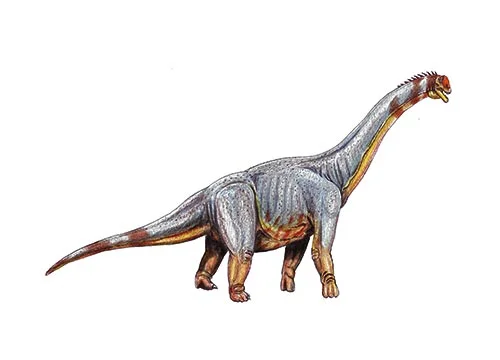Paralititan (Tidal titan)

Pah-ral-e-ty-tan
Joshua B. Smith, Matthew C. Lamanna, Kenneth J. Lacovara, Peter Dodson, Jennifer R. Smith, Jason C. Poole, Robert Giegengack & Yousri Attia - 2001
Herbivore
Estimated 30 meters long
Sauropod
P. stromeri (type)
Egypt - Bahariya Formation
Late Cretaceous, 95 million years ago
Paralititan Facts
Paralititan, meaning “tidal titan,” is a genus of large sauropod dinosaur that lived during the Late Cretaceous period, approximately 95 million years ago. Its fossils were first discovered in the Bahariya Formation in Egypt, and it is one of the largest known dinosaurs from Africa.
Paralititan is estimated to have been around 30 meters (98 feet) long and weighed up to 75 tons, making it one of the largest animals to ever walk the Earth. It had a long neck and tail, and a massive body with four column-like legs. Its skull was elongated, with a toothless beak that it used to strip vegetation.
The name “Paralititan” reflects the fact that it was found in a formation that was deposited in a tidal flat environment, indicating that this dinosaur may have spent some of its time wading in shallow water.
The fossils of Paralititan have provided valuable information about the evolution of sauropods in Africa during the Late Cretaceous. Scientists have been able to study the bones of Paralititan and use them to understand how these massive dinosaurs were able to support their own weight and grow to such enormous sizes.
One interesting feature of Paralititan is its shoulder blade, which is longer and more slender than those of other titanosaurs. This suggests that Paralititan may have had a different pattern of muscle attachment in its shoulder, which could have given it greater range of motion and helped it to support its massive neck.
In conclusion, Paralititan is a giant sauropod dinosaur that lived in what is now Egypt during the Late Cretaceous period. It is one of the largest known dinosaurs, with a massive body and long neck and tail. Its fossils have provided important insights into the evolution of sauropods in Africa and have helped scientists to understand how these massive animals were able to support their own weight.



